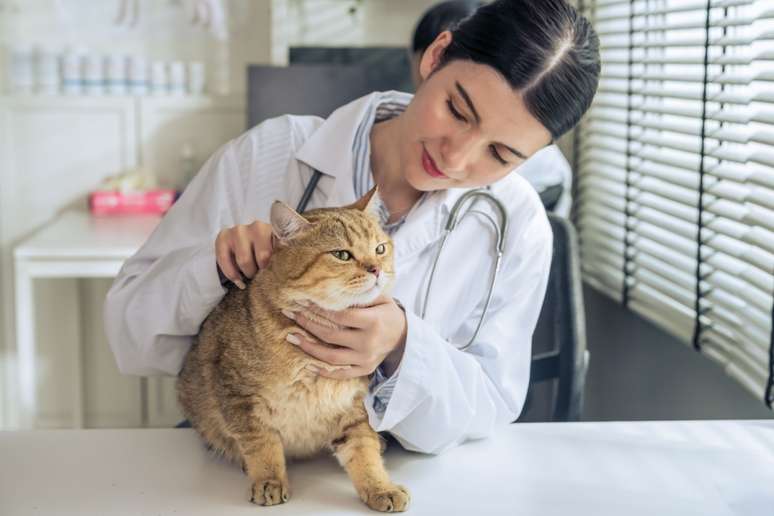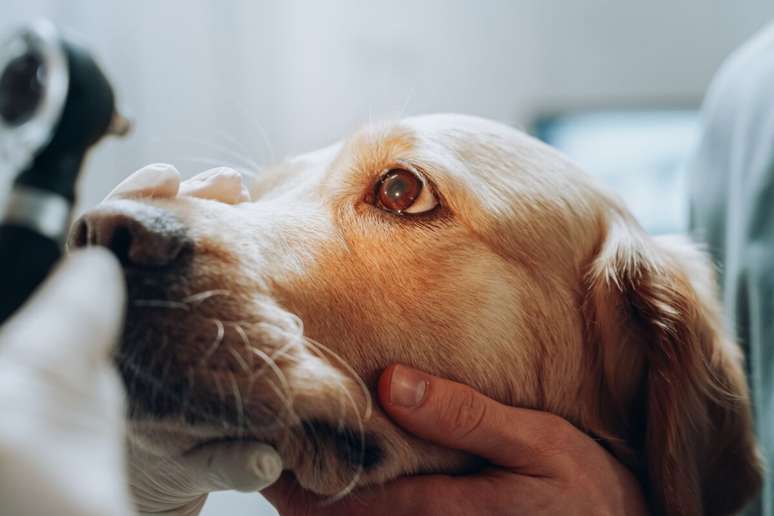Your veterinarian explains the symptoms and treatments for problems affecting pets’ eyes
Conjunctivitis and cataracts are two of the many eye diseases that can occur in both humans and animals. Since 2018, the month of June has been dedicated to raising awareness of eye diseases in humans, and nothing is more fitting than covering the pets in this action. Called “June Violeta Pet”, the movement aims to raise awareness among owners of the main eye diseases affecting pets.
Although little publicized, eye diseases in dogs and cats are relatively common and can range in severity, from minor problems that cause minimal discomfort to more serious conditions that can lead to vision loss. Based on this, Dr. Elaine Mello, a veterinarian specializing in ophthalmology at the Veros Veterinary Hospital, lists some conditions that can affect the eye health of animals. Watch!
1. Conjunctivitis
A conjunctivitis it is an inflammation of the conjunctiva, the mucosa that covers the white part of the eye (sclera) and the internal part of the eyelids. We can say it in petsLike dogs and cats, conjunctivitis can be caused by a variety of factors and can affect one or both eyes.
- Symptoms: red eyes, eye discharge, frequent blinking and itching.
- Causes: dry eyes, viral infections, allergies, environmental irritants, e.g. volatile cleaning products such as chlorine and formaldehyde.
- Treatment: will depend on the initial cause of the conjunctivitis, which can be identified through ophthalmic tests.
2. Cataracts
It is an ocular pathology characterized by the opacity of the lens, the natural lens of the eye, which is normally transparent. Cataracts prevent light from passing through and reaching the retina, resulting in blurred vision or vision loss. The veterinarian explains that cataracts can affect dogs, rabbits, birds and, less frequently, cats.
- Symptoms: cloudiness in the center of the eye and difficulty seeing.
- Causes: genetic predisposition, advanced age and diabetes.
- Treatment: cataract removal surgery and intraocular lens implantation.
3. Glaucoma
Glaucoma is a serious eye condition Mainly characterized by an increase in intraocular pressure (IOP), which can cause damage to the retina and optic nerve, as well as causing vision loss. In general, the pets They are taken to the veterinary ophthalmologist when they have lost their sight. However, the disease can be diagnosed early by monitoring intraocular pressure and preventing vision loss.
- Symptoms: red eyes, blurred vision, dilated pupils and eye pain.
- Causes: There are two types of glaucoma: primary, which occurs due to a genetic predisposition, and secondary, caused by other eye diseases.
- Treatment: Your vet may recommend medications to reduce eye pressure or recommend surgery.

4. Corneal ulcers
Corneal ulcers are a worrying disease. “Corneal ulcers are lesions or erosions on the surface of the cornea, the clear layer that covers the front of the eye. Ulcers are quite common in petsespecially in dogs with short muzzles and large eyelids, and can be extremely painful and can lead to serious complications if not treated properly,” explains the vet.
- Symptoms: pain, frequent blinking, eye discharge, corneal cloudiness and red eyes.
- Causes: trauma, dry eyes and poorly positioned eyelashes.
- Treatment: Your vet may recommend medications or surgery depending on the severity of the ulcer.
5. Retinal diseases
You may have heard the expression “detached retina,” but this is one of many other retinal diseases pets which can impair vision and, in some cases, lead to blindness. The retina is the inner layer of the eye that contains light-sensitive cells. Through them, neurons are responsible for transmitting visual information to the brain.
Retinal diseases can occur due to a genetic predisposition, such as cases of progressive atrophy, but they can also be a symptom of other diseases of the body. Two examples are retinal detachment, which can be a sign of high blood pressure, and retinal inflammation, which can indicate an infectious disease.
- Symptoms: gradual or sudden loss of vision and difficulty seeing at night.
- Causes: genetics, inflammation, trauma and systemic diseases.
- Treatment: It depends on the cause. Some forms can be treated with medication and reverse vision loss, but others are progressive and your veterinary ophthalmologist can advise on how to create an accessible environment for your child. pet with low vision.
Breeds more prone to eye diseases
Some breeds of dogs and cats are more predisposed to developing eye diseases due to genetic factors and specific anatomical characteristics. Knowing them can help owners better monitor their dog’s eye health. pets and seek appropriate preventative care.
The most prone dog breeds are: shih tzu, pug, bulldog, cocker spaniel, poodle, labrador retriever, boxer and schnauzer. On the other hand, the most affected cats are PersianMaine Coon, Burmese and Siamese.
“We at Veros explain to owners that careful monitoring and adequate preventive care can manage or avoid many eye problems, ensuring vision and a better quality of life for the pet“, explains the veterinarian specializing in Ophthalmology.
By Daniel de Oliveira
Source: Terra
Ben Stock is a lifestyle journalist and author at Gossipify. He writes about topics such as health, wellness, travel, food and home decor. He provides practical advice and inspiration to improve well-being, keeps readers up to date with latest lifestyle news and trends, known for his engaging writing style, in-depth analysis and unique perspectives.






